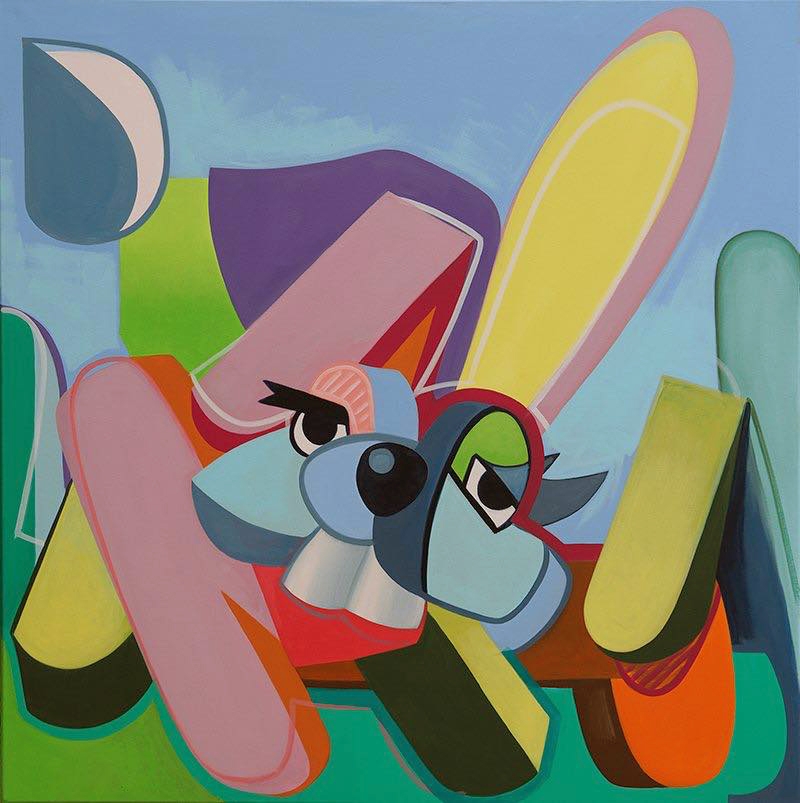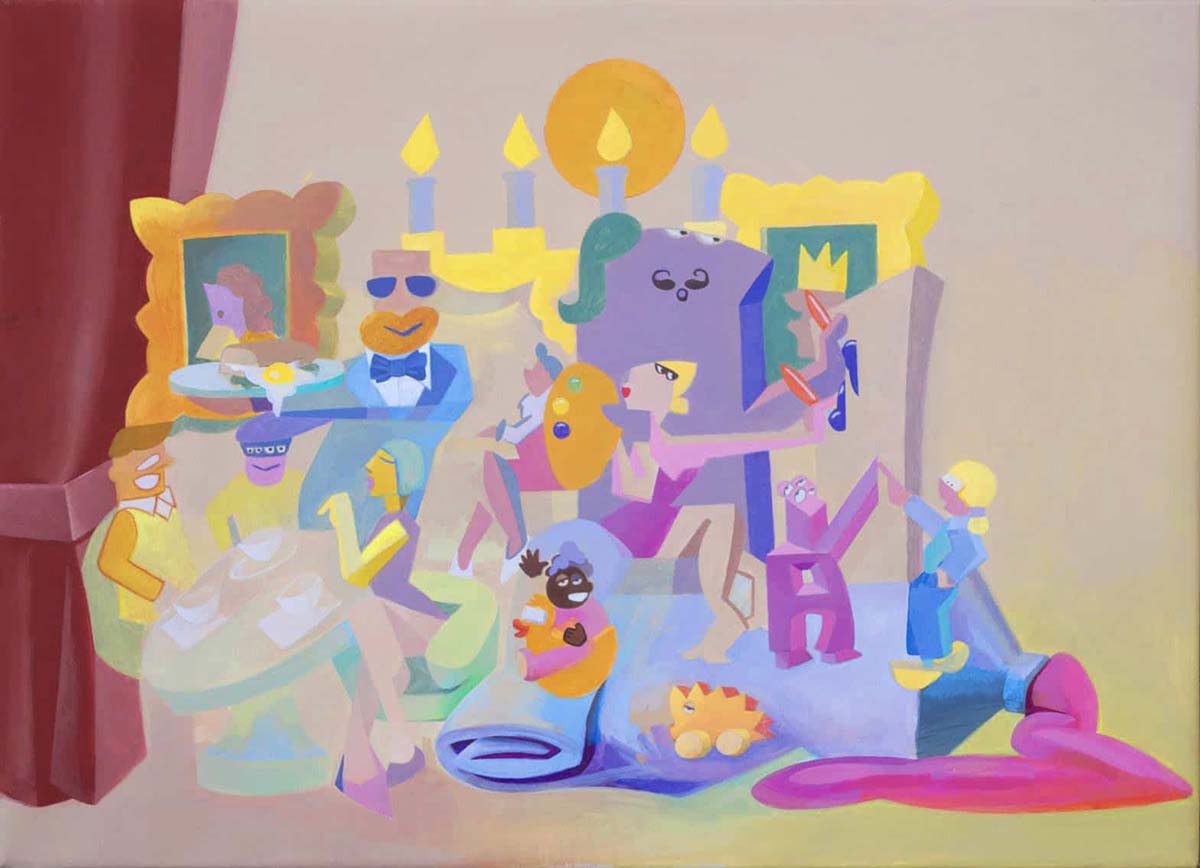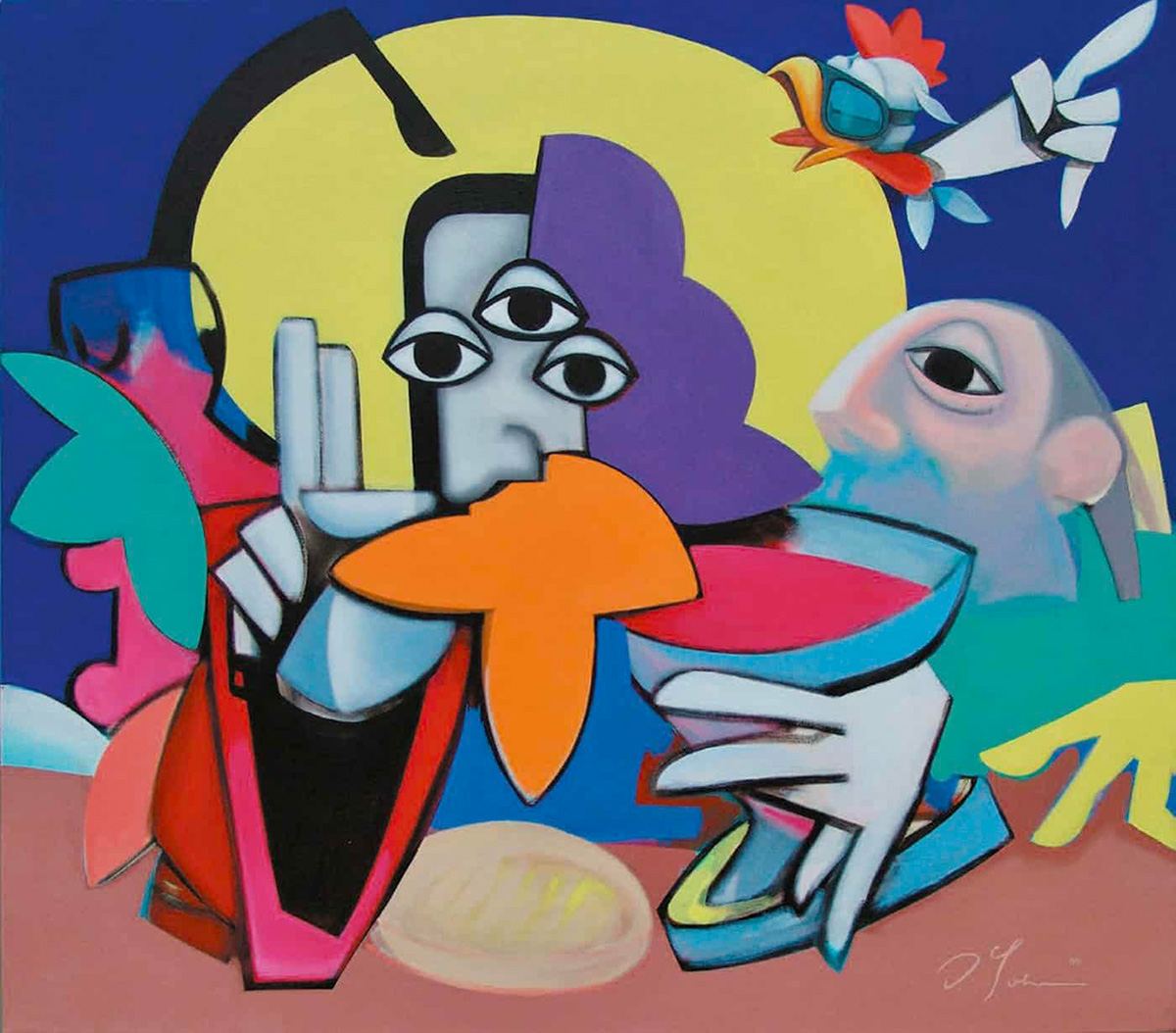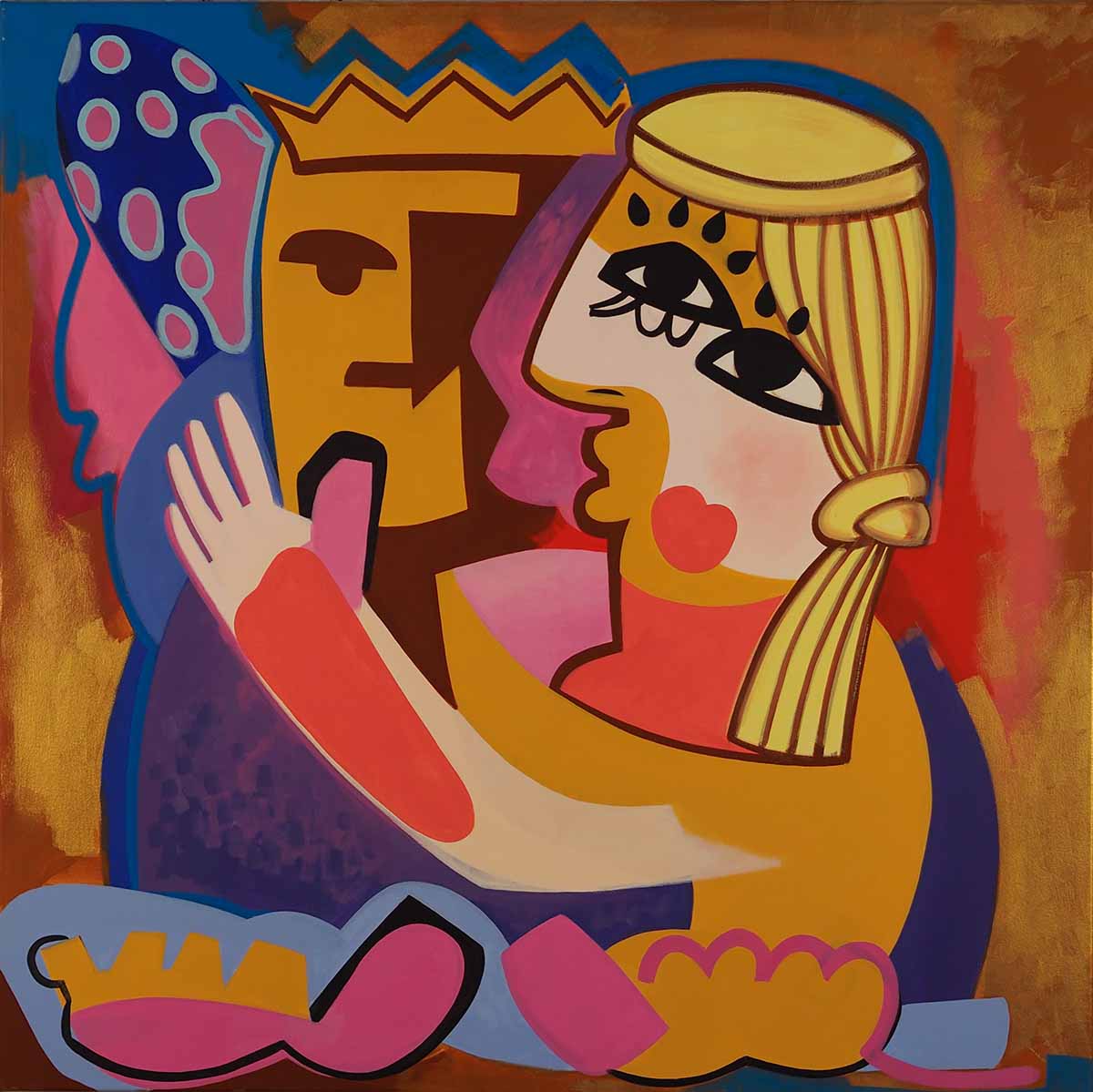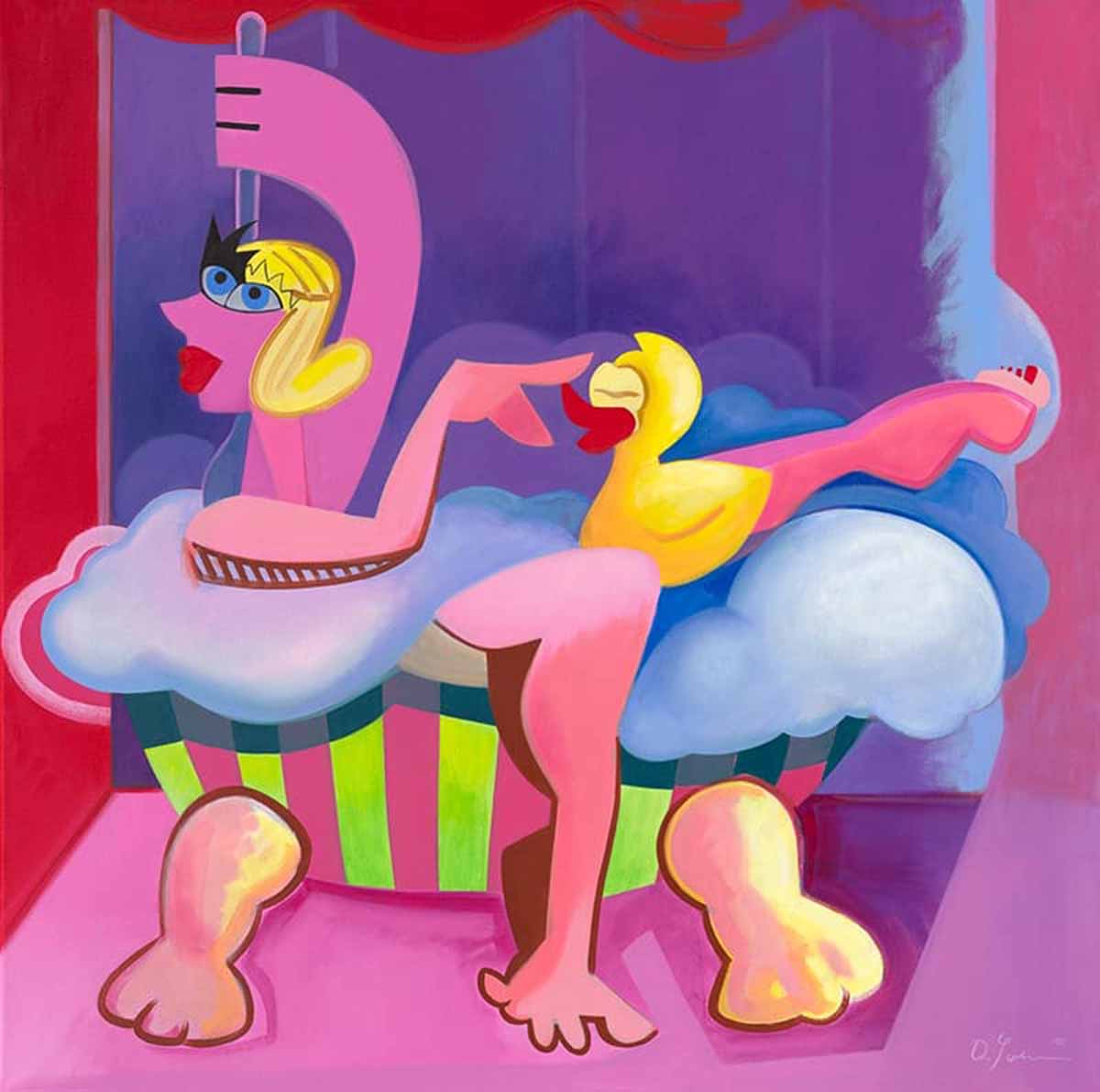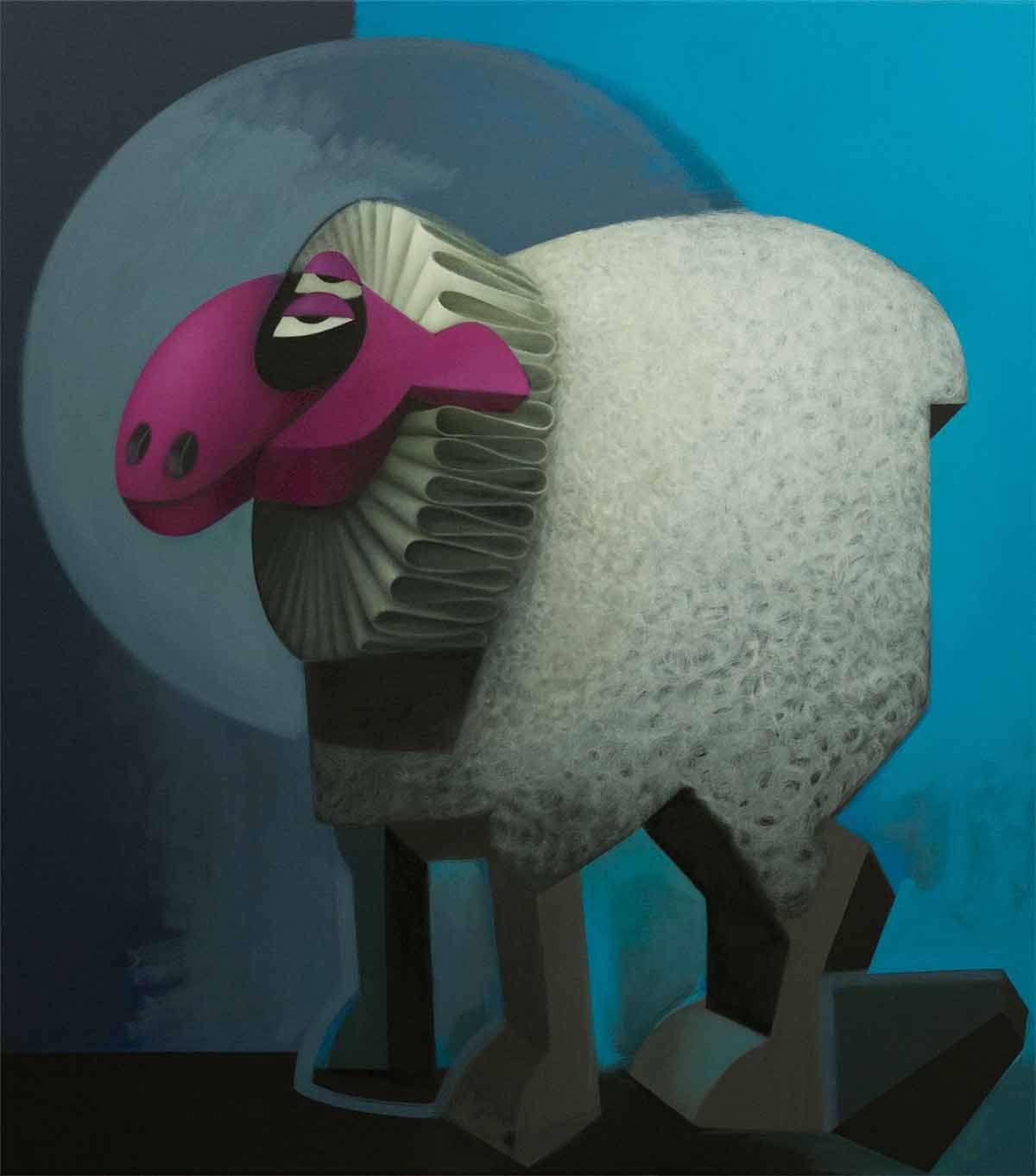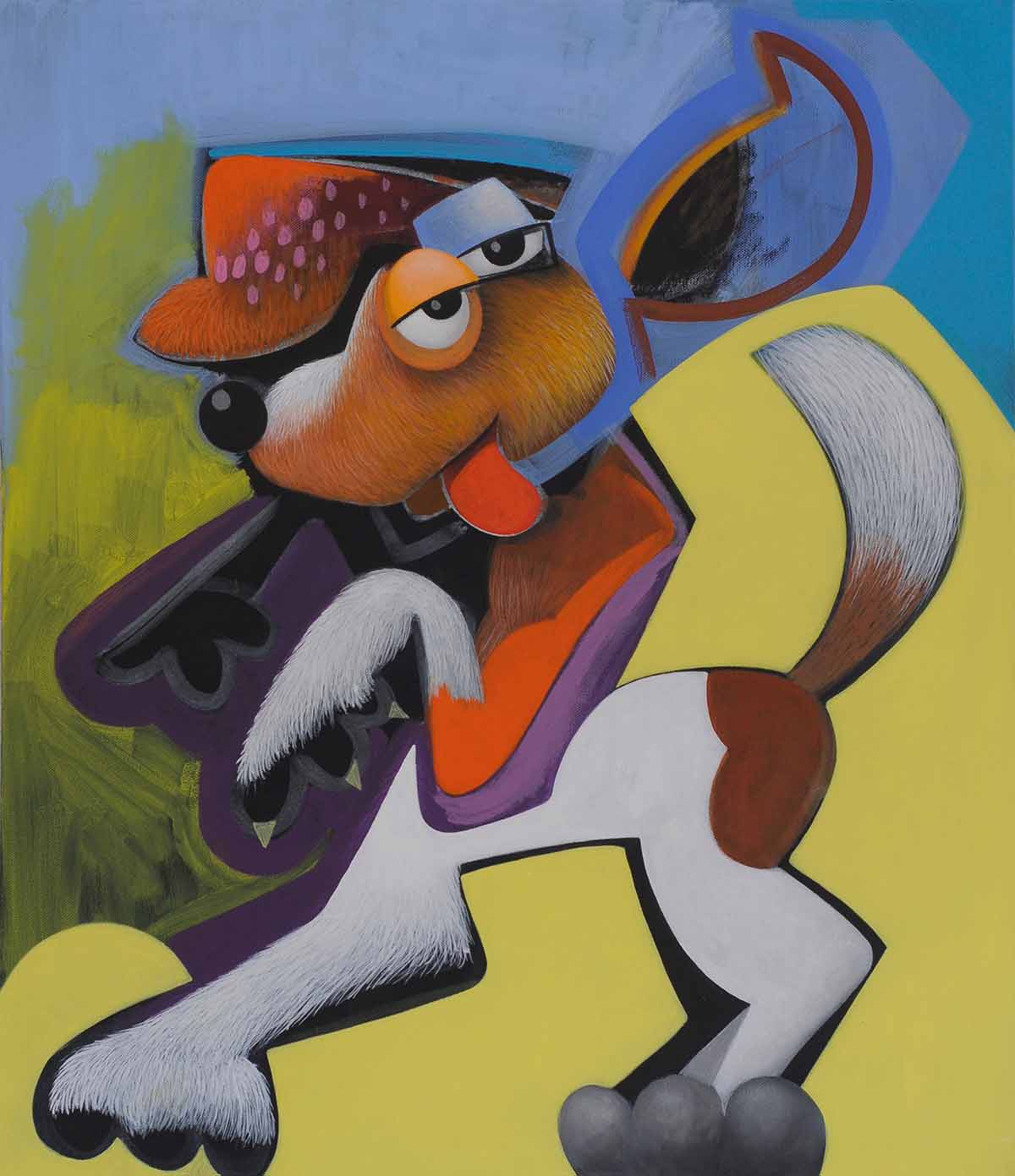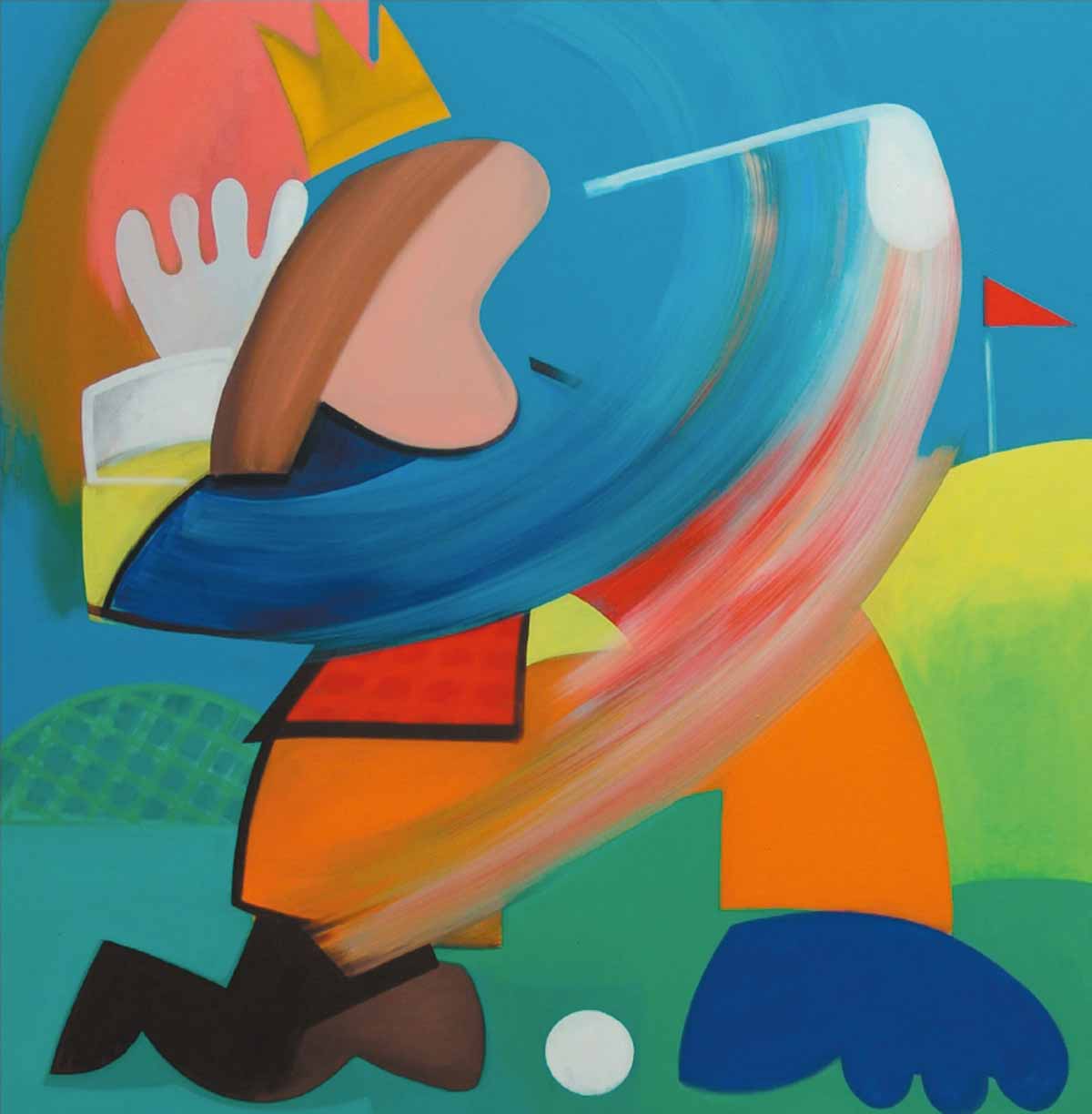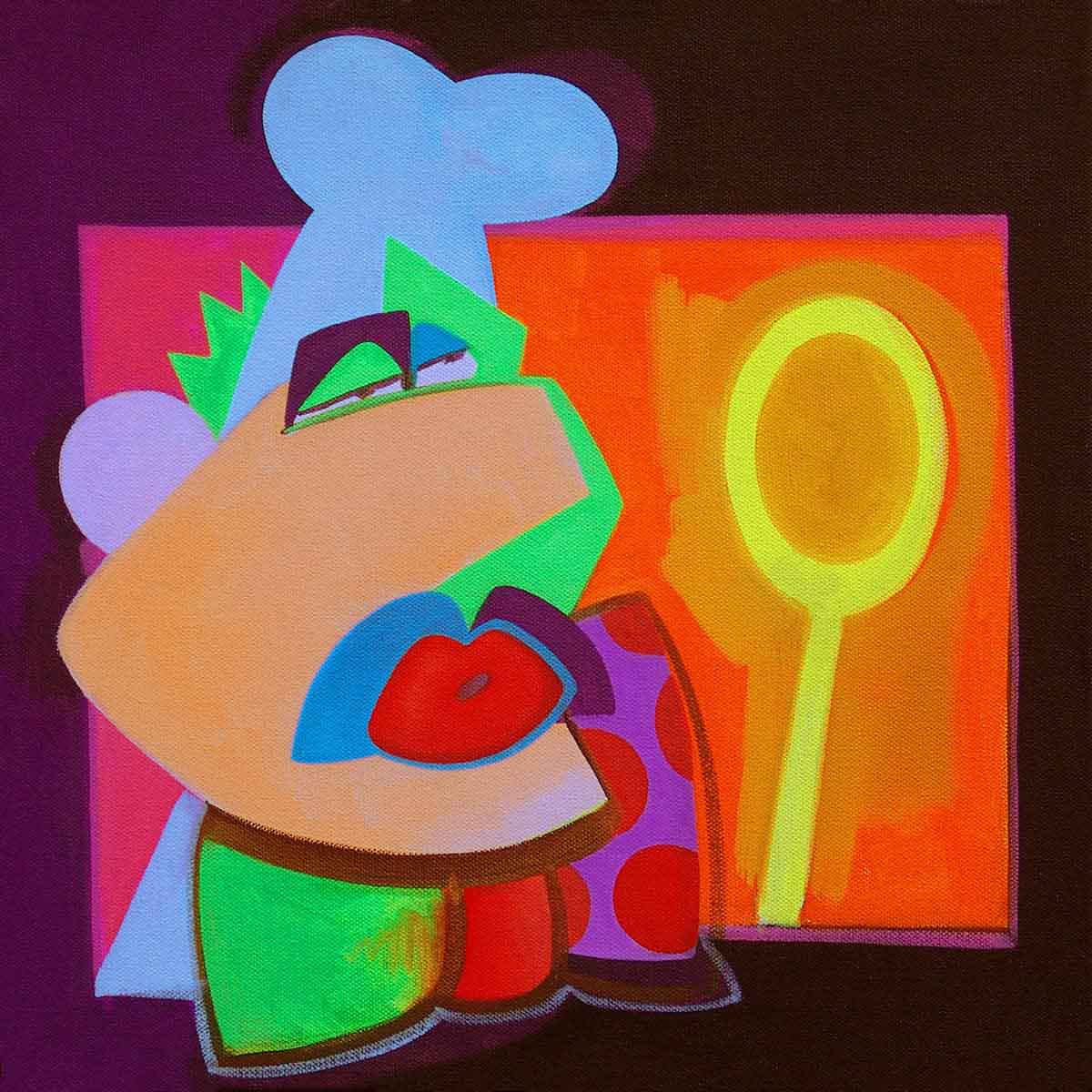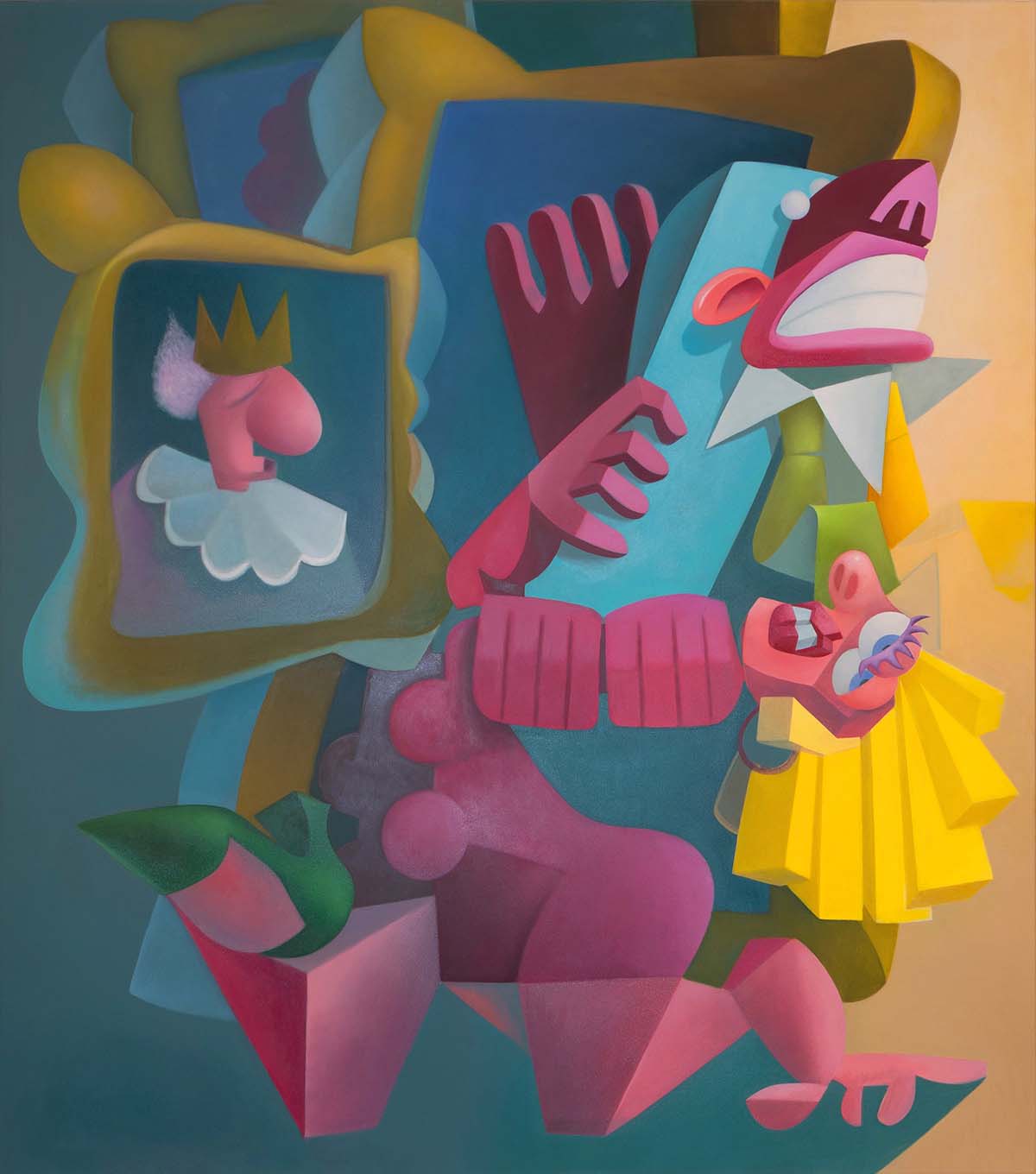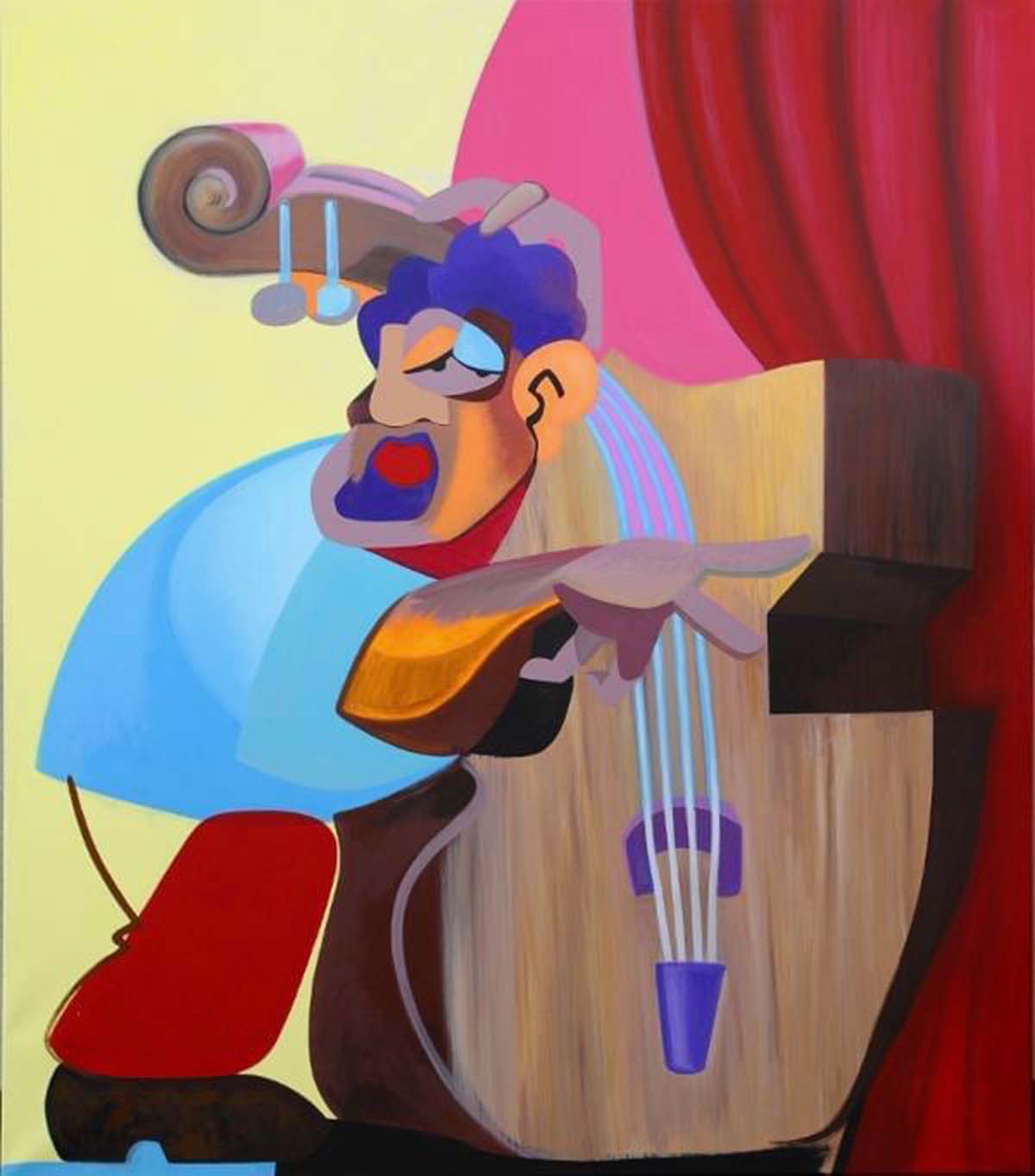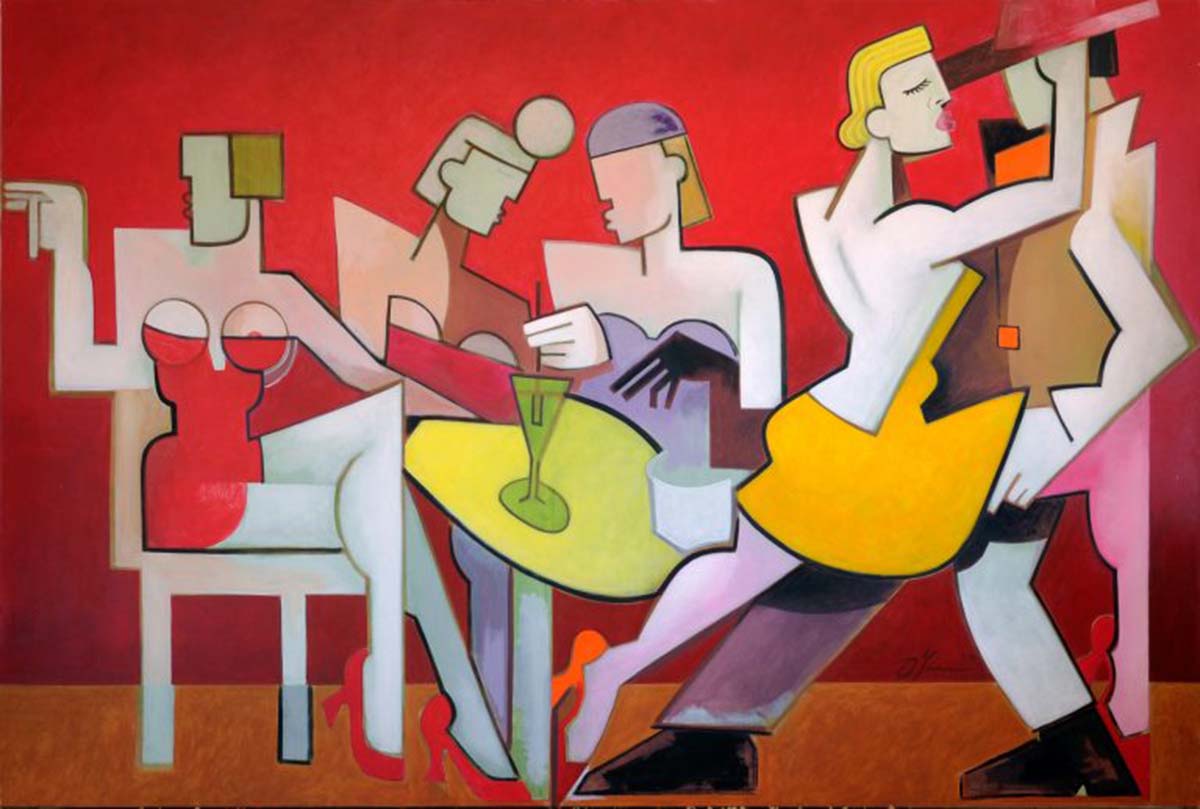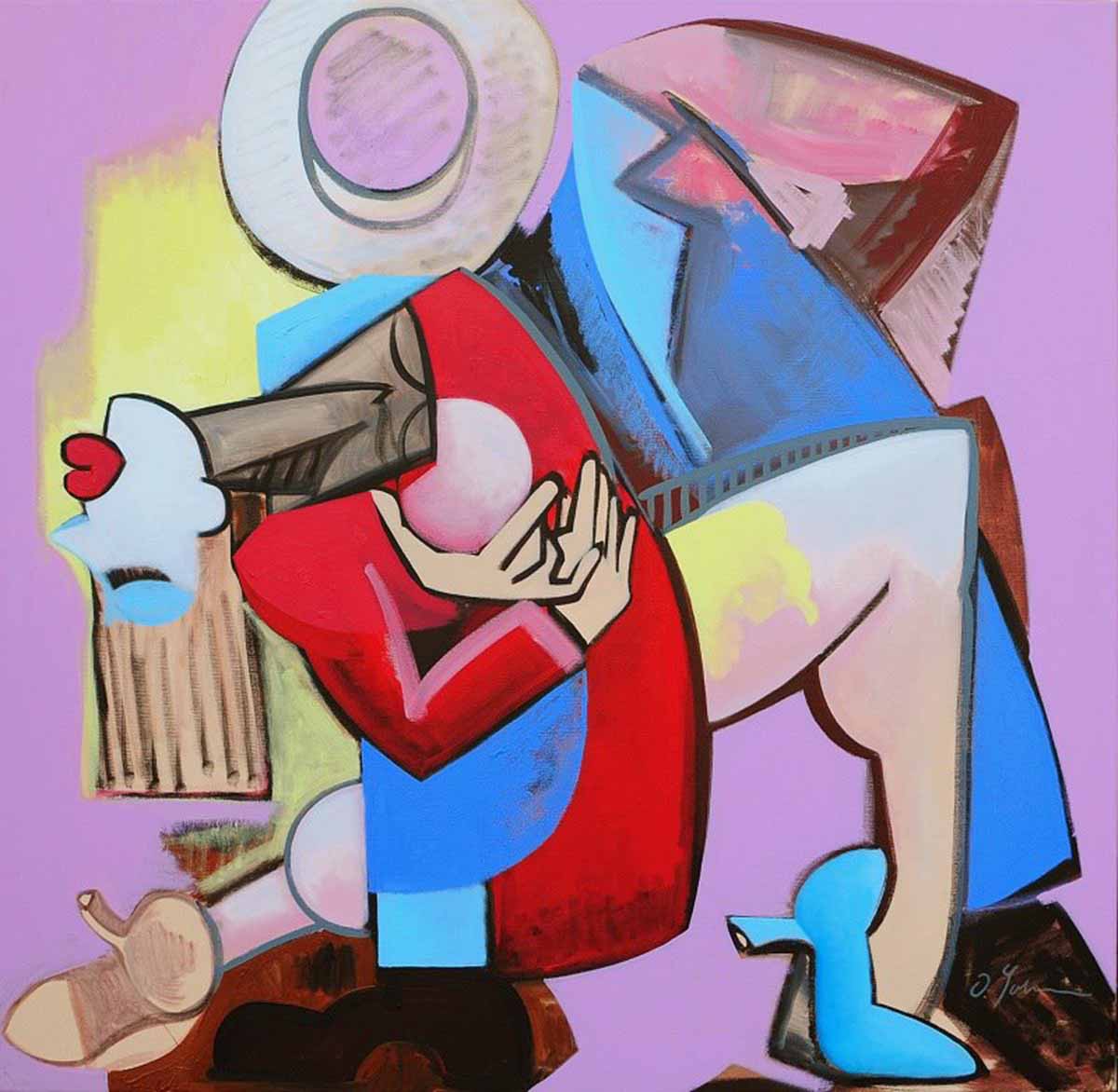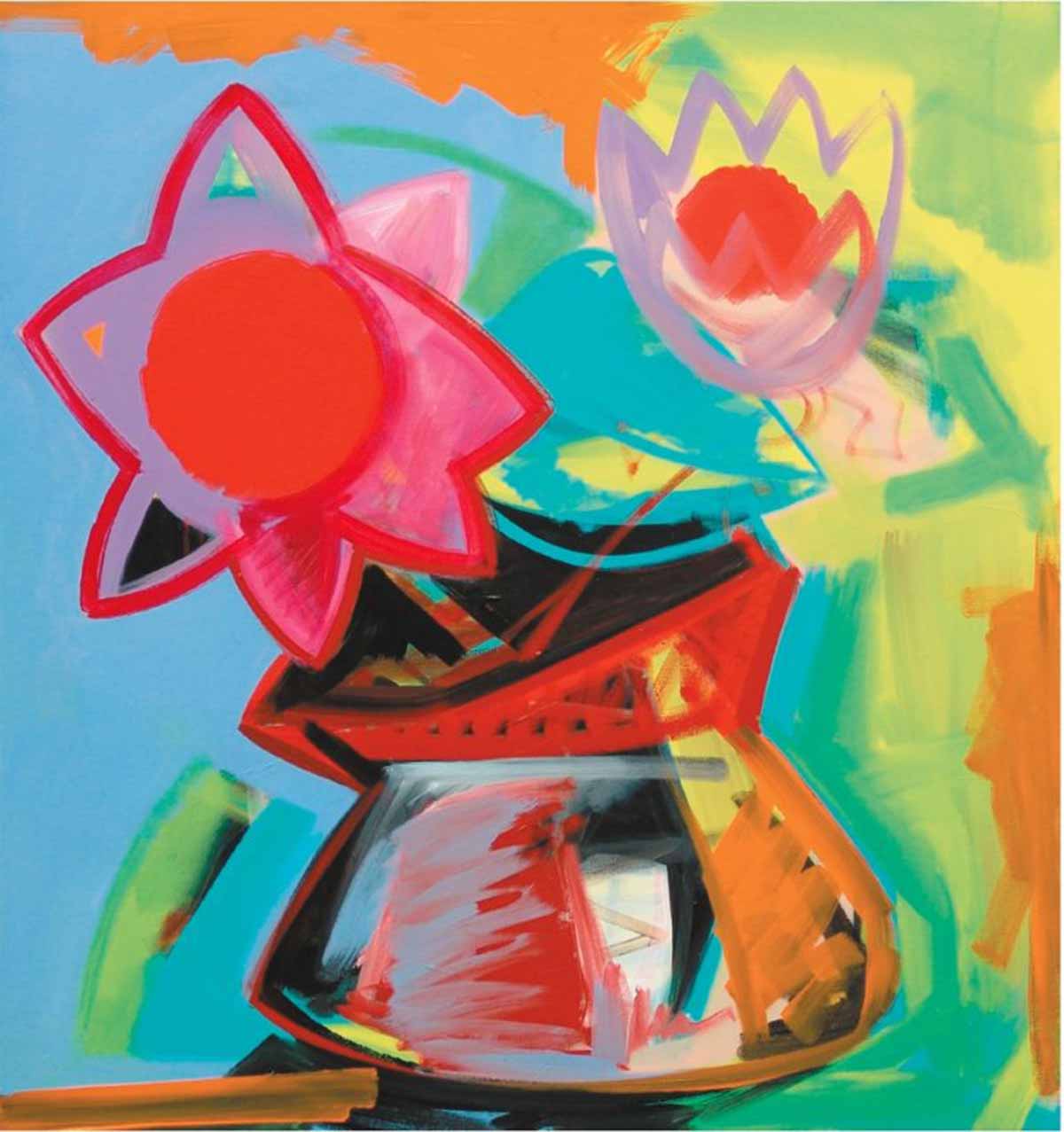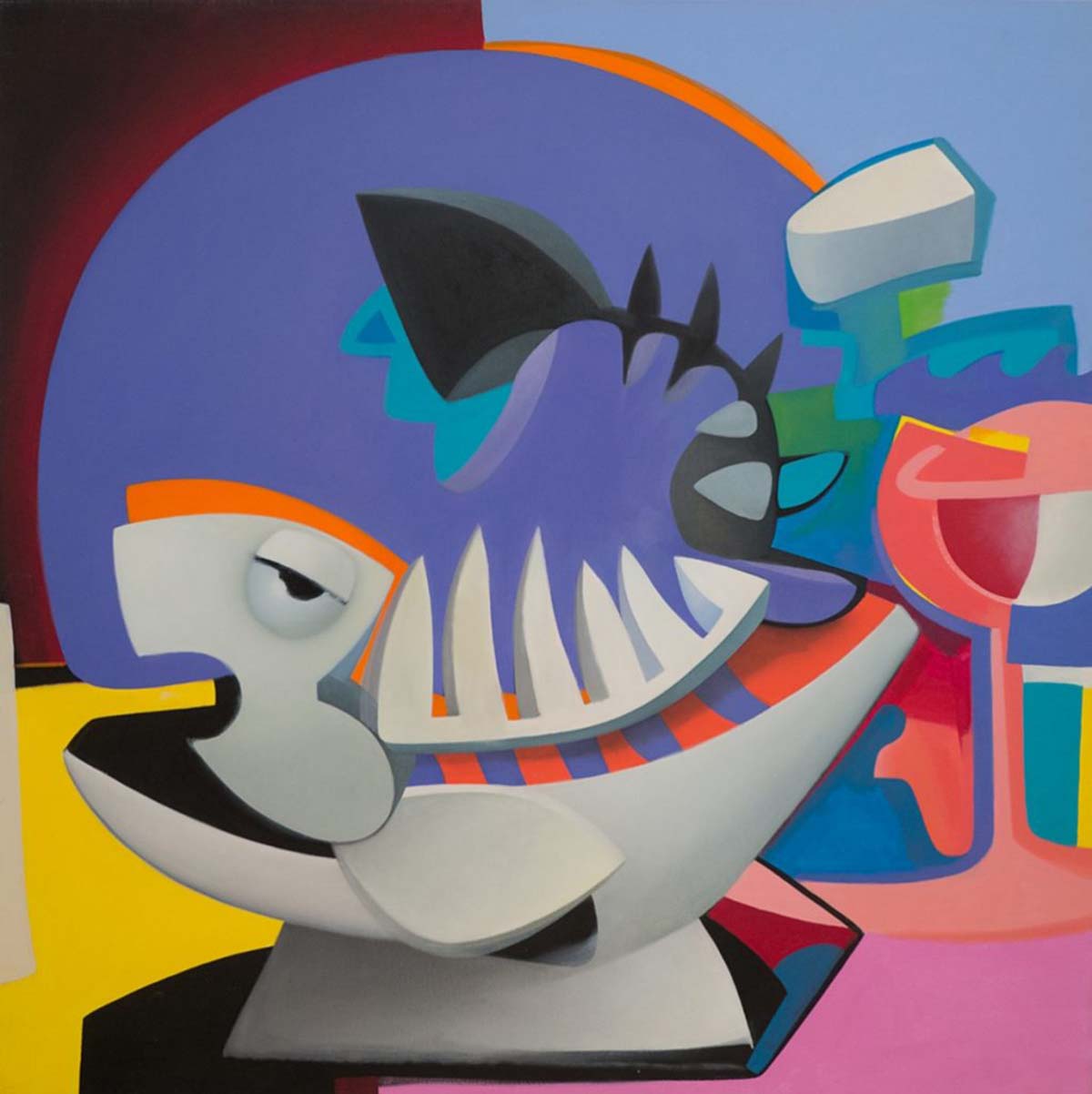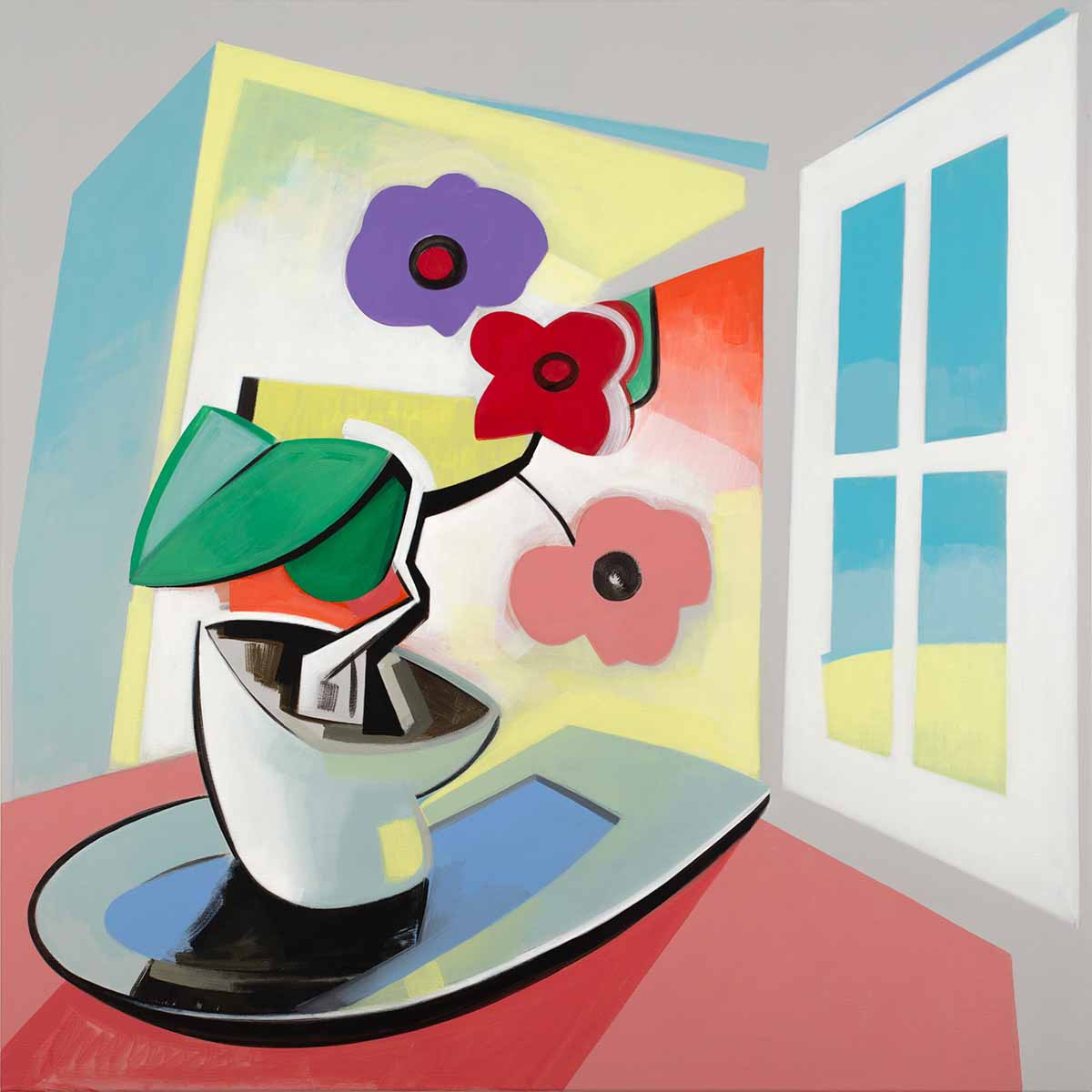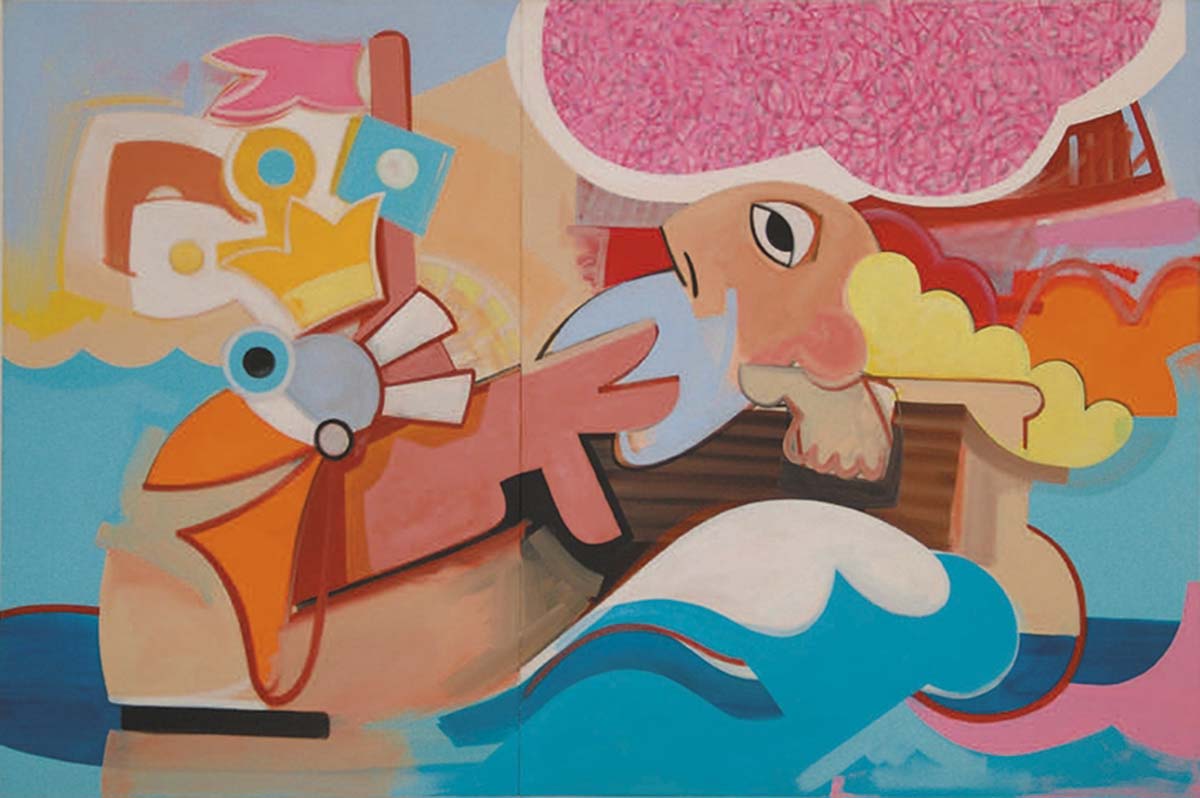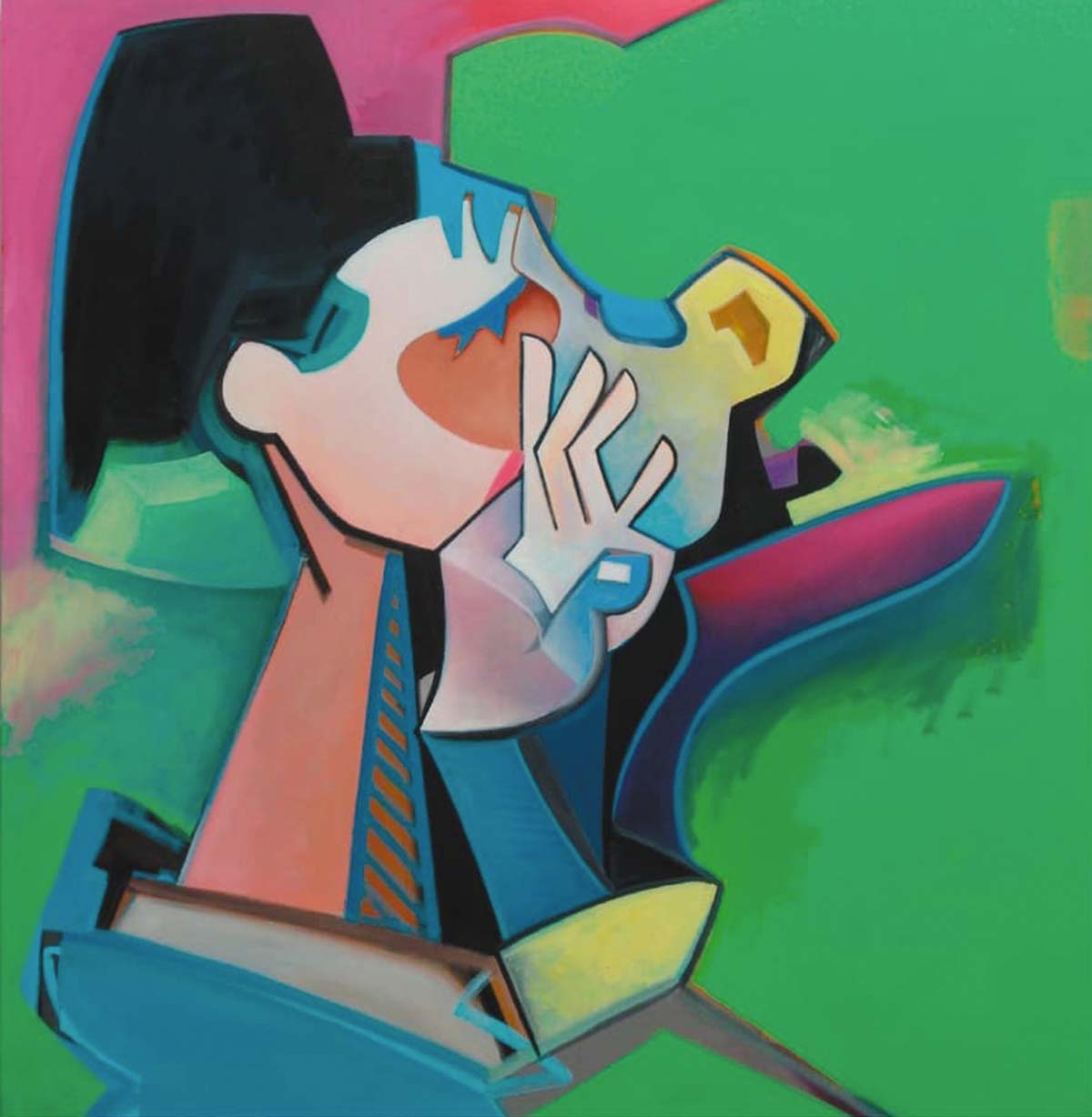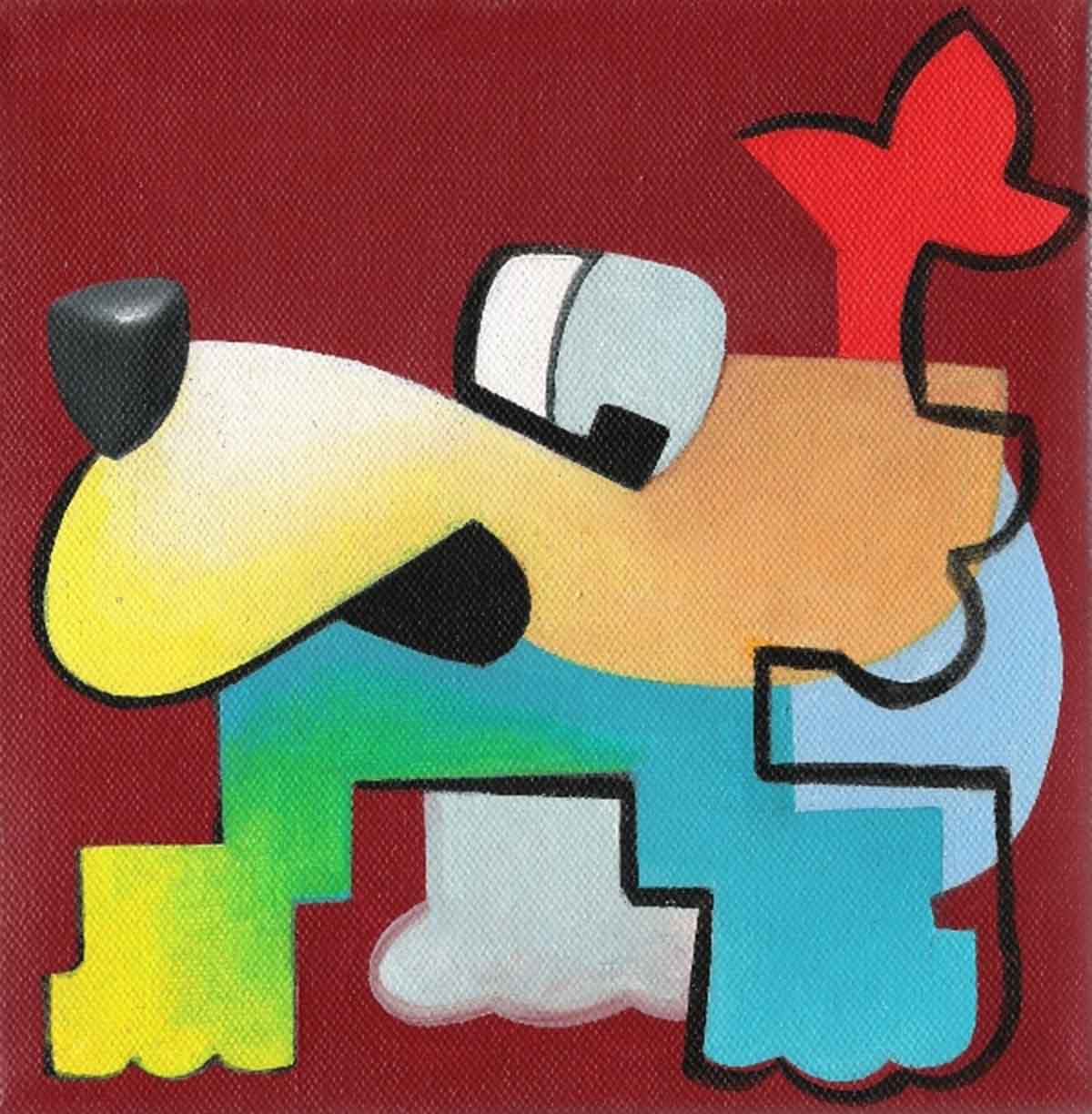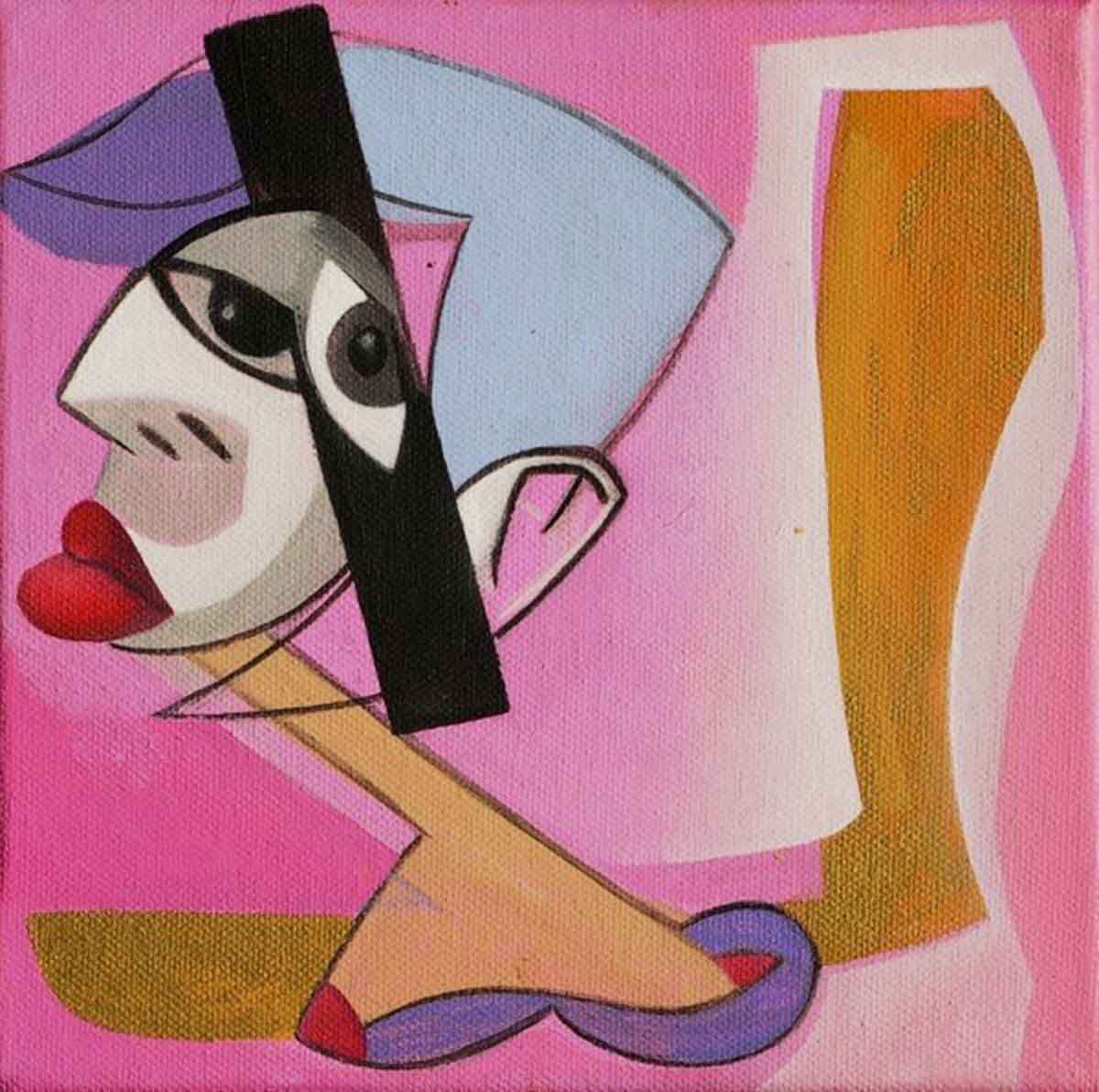The stylistic terms ‘comic’ and ‘cubism’ overlap in their formal approaches in ditArdo’s artistic language. The ‘comic’ is characterized by the means of line and surface, whereby the space is also defined by the surface. The striking effect is used together with synthetic ‘cubism’, the simultaneous and superimposed representation of different views or perspectives, to make high-contrast statements about the motif or experiences. The motif becomes a pictorial symbiosis of everyday experiences, dreams, lines, colors and structures. For example, the yellow tomcat stands for the image of laissez-faire, of roaming around in the midday sun.
In the artistic observation process, questions about the fourth dimension arise primarily in sunny Jakarta. What color are the streaks of light over the water? How much time is eight months? Is time yellow, red or blue?
These are just a few quotes from our lively email exchange in the ether.
Text: Dr. Wolter Abele, art historian on the exhibition ‘Out of The Common’ 2005




